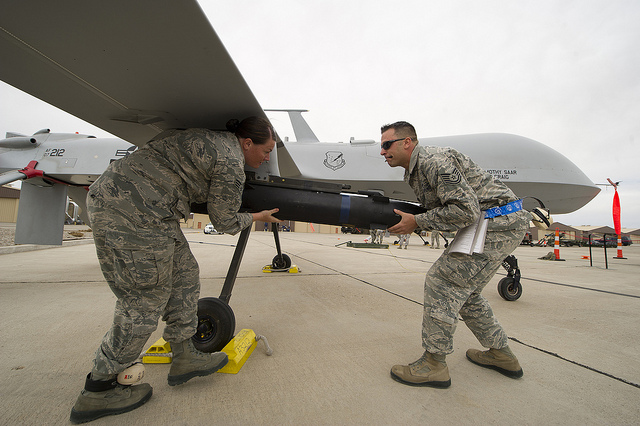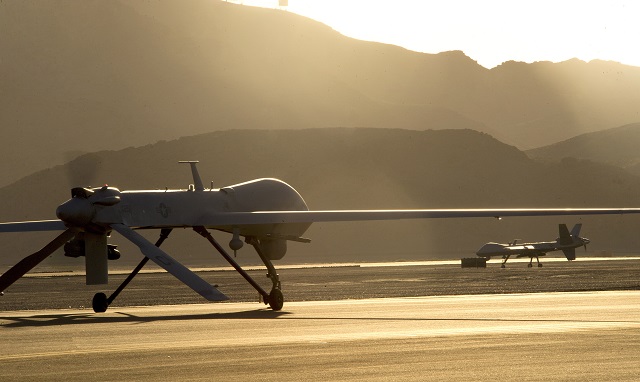A General Atomics MQ-1B Predator crashed during a missile practice in the Nevada desert last June because of a right wing control module failure, not pilot error, a US Air Force accident investigation board has concluded.
The aircraft went into a death spiral seconds after launching a missile from its left wing due to the control module fully lowering and locking the right wing aileron.
The MQ-1B employs the Lockheed Martin Hellfire missile, and data indicates that the first of two missiles being carried on the mishap Predator fired before its satellite link with the ground control station was lost.
The aircraft went down carrying the second live missile at the Nevada Test and Training Range, just nine miles from the launch site at Creech Air Force Base.
The MQ-1B had been flying for more than five hours and performed a number simulated missile launches before firing the first live shot. The aircraft was destroyed and the total damage bill was estimated at $4.6 million.
“The cause of this mishap was the failure of the right wing control module,” says the accident investigation report. “There was no action that the mishap crew could have performed which would have prevented the mishap remotely piloted aircraft from going out of control.”

By all accounts, the aircraft was properly maintained and inspected prior to launch.
“Once the right wing control module failure locked the right aileron into the full down position, there was no other mishap crew action that could have counteracted the banking movement that placed the [aircraft] out of control,” investigation board president Lt Col Michael Edwards says in the report.
MQ-1B crashes are a fairly regular occurrence, but mishaps are most commonly attributed to pilot error or a lost control link. Some aircraft have been lost in Afghanistan and Iraq, and several more have crashed during routine training missions stateside.
The air force is moving to a single fleet of General Atomics MQ-9 Reapers, the MQ-1’s huskier successor, but the Predator has been kept in service longer due to operational demand. The aircraft are launched remotely but controlled via a satellite link and fibre optic cable network from control hubs in the United States.
The air force currently operates about 140 Predators and 260 Reapers.

Download the full report obtained by Flightglobal here.
Source: FlightGlobal.com























